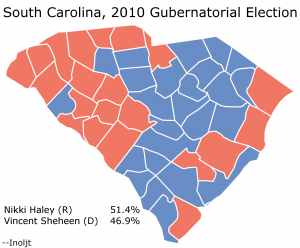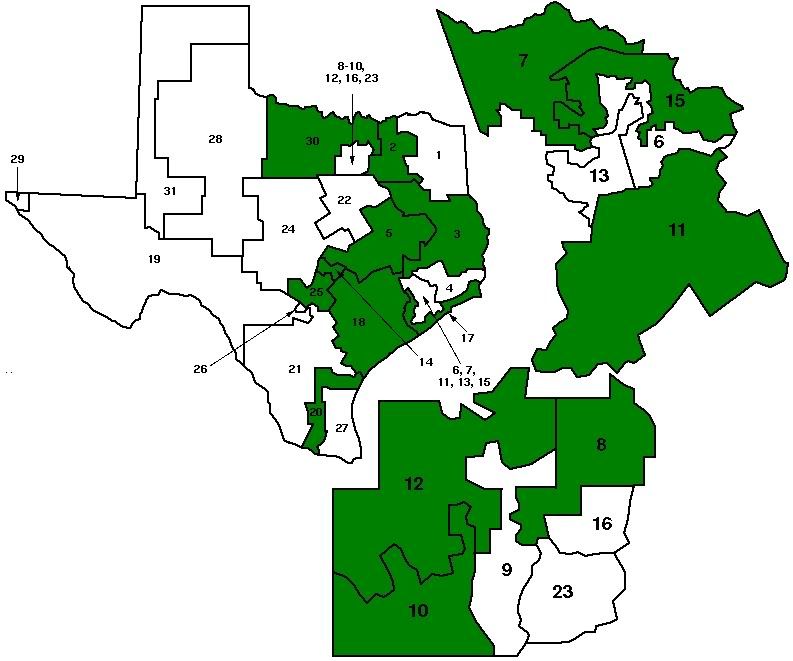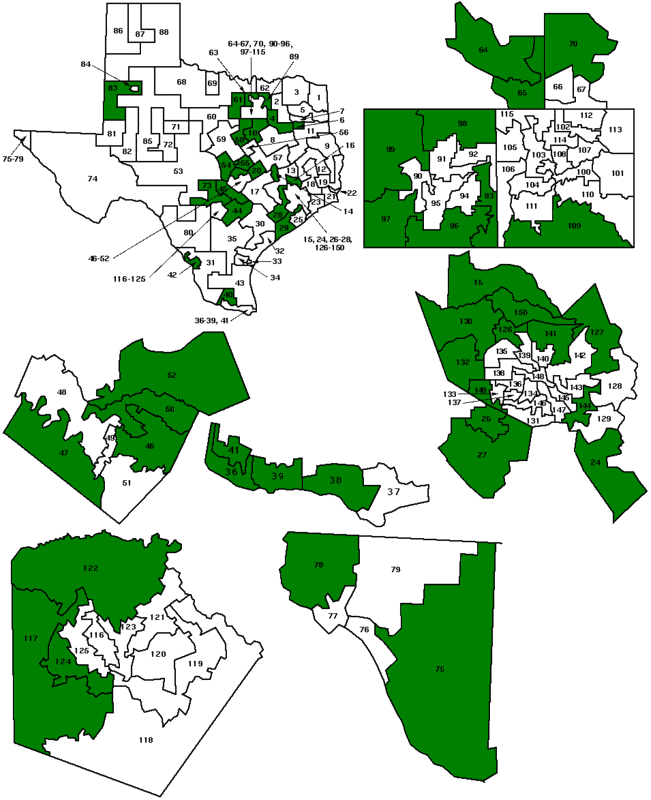• FL-Sen: Mike Haridopolos is starting to look like one of those guys who just seems to track muck wherever he goes – or has been. How do you like this for both ridiculous and corrupt? He received an astounding (a) $152K (b) in taxpayer money to (c) write a book that (d) no one would ever read – and that (e) never got published because (f) the manuscript was too shitty to print. Getting that much (a) to do (c) is remarkable in any environment, but particularly when (a) is in the form of (b), and (d) ensures that the whole venture will be a major money-loser. (E) and (f) are really just the punch line – which makes Haridopolos the joke (and Florida taxpayers the serious losers here).
• MA-Sen: I get the sense that Deval Patrick’s decision to blab to the National Journal about the candidates he’s talked to who might run for senate must either have been deliberately planned or really unappreciated. Patrick said that 2010 special election candidate Alan Khazei and Newton Mayor Setti Warren told him they are “in, for sure” – leading Warren to tell Wicked Local Newton that he’s merely considering the race and has no timetable for an announcement. Was Patrick fluffing Warren in a helpful way, or was he just cracking out of turn?
• MT-Sen, MT-Gov: Was this even a thing? Dave Catanese asked Gov. Brian Schweitzer if he and Sen. Jon Tester might trade places – the term-limited Schweitzer running for senate and the flat-topped Tester running for governor. Schweitzer said nuh-uh.
• TN-Sen: I won’t call it a “must-read,” but a strong “should-read” piece in the Tennesean gives some good background on Nashville Mayor Karl Dean, who may be one of the strongest (only?) Dem options to take on Sen. Bob Corker in 2012. Dean has a Phil Bredesen-like “moderate” background, has been largely successful as mayor, and also has a very wealthy wife. But the article notes that Dean first has to win re-election as mayor this August (though he’s the favorite) – and more importantly, he hasn’t express any particular interest in running for senate. Maybe a run against freshman Gov. Bill Haslam in 2014 might be a better choice.
• VT-Sen: Republican state Auditor Tom Salmon says he’ll decide on whether to challenge Sen. Bernie Sanders this week. He has a conference planned for noon Thursday.
• IN-Gov: Mike Pence, a very likely gubernatorial candidate, offered quite a bit less than a full-throttled defense of Gov. Scott Walker’s attempts at union busting, perhaps in an effort to avoid a rift with the man he’s hoping to replace, Gov. Mitch Daniels. But given that Daniels’ decision not to follow Walker’s lead engendered a ton of teabagger vitriol, I’m wondering if Pence’s move to go soft here might cause him trouble in a potential GOP primary.
• ME-Gov: Speaking of Scott Walker, Gov. Paul LePage, elected with 38% of the vote, says that he, too, will pursue his lifelong dream of destroying collective bargaining rights. LePage may run into static from the GOP legislature, though, before he has the chance to fully transform himself into Kochbot 2.0.
• MS-Gov: It’s always a little tricky when someone is referred to as a businessman of some sort, but I’m going to guess that newly-announced Republican gubernatorial candidate Ron Williams, “owner of Pascagoula-based Hazmat Services Inc.,” is a lot closer to the Some Dude end of the spectrum than the zillionaire kapitalist side.
• WI-Gov: Speaking of Scott Walker yet again, the RGA has a new ad coming out in support of said governor, but of course, NWOTSOTB. Meanwhile, a fellow who says he did “micro-targeting” for Obama in 2008, Ken Strasma of Strategic Telemetry, has a poll out which he says supports the idea that Walker could be vulnerable to a recall. And through the use of un-revealed “micro-targeting models,” Strasma also thinks that there would be more than enough people willing to sign a petition in each of the eight Republican state senate districts where senators are currently exposed to the legal possibility of a recall.
• WA-Gov: Show of hands – does anyone here think Gov. Christine Gregoire will actually seek a third term? Hey, maybe we’re all wrong, but the very fact that she’s even been entertaining the idea has already been a big enough surprise. Anyhow, Gregoire says she’ll decide by “early summer.”
Meanwhile, Democratic King County Executive Dow Constantine, whose name proverbially “came up” last December (see SSP Amazing Daily Digest, Issue #44) as Rep. Jay Inslee was seen to be holding his fire, sounds largely like a “no.” Constantine said he might “at some point be interested in an opportunity,” but “I have on my plate a few matters in King County government and I’m going to remain focused on that this year.” Of course, with Gregoire now fogging in the control tower, everyone else is probably going to be put in a holding pattern.
• CA-36: This may not be a huge surprise, but Janice Hahn said that now ex-Rep. Jane Harman was querying her about her future political plans when she was a guest of Harman’s at the State of the Union address in January (going so far as to ask Hahn whether she’d be interested in running for CA-36), then tipped Hahn about her resignation announcement hours before she made it. This helps explain Hahn’s particularly energetic burst out of the gates, but it doesn’t explain – or excuse – Debra Bowen’s anemic start. Two weeks after announcing, Bowen’s website is still nothing more than a splash page with a big “Contribute” button, and I haven’t seen a single announcement of any high-profile endorsements. Does a sitting Secretary of State really have that few friends in high places?
• FL-25: When you’ve lost Eric Cantor… the no. 2 Republican in the House was in Miami for a fundraiser, but already-doomed Rep. David Rivera was pointedly asked to stay away. Worse, Cantor said he has “concerns” about Rivera, and worse still, he was seen meeting with former state Rep. Renier Diaz de la Portilla, a possible replacement for Rivera. (Diaz de la Portilla, who served just one term in the state House a decade ago, is the brother of former state Sen. Alex, who was touted as a possible FL-25 candidate last cycle, and current state Sen. Miguel.)
• NY-13: Rep. Mike Grimm is obviously doing the sensible thing here, working with Democrats (and somewhat less-insane-than-usual Republicans) to secure funding for government programs that actually matter to New Yorkers. Money for cops = popular! Of course, “the sensible thing” has pissed off local teabaggers, which could prove a problem for Grimm as he seeks re-election.
• NY-25: The namejacking anti-abortion Susan B. Anthony List is running an ad thanking Ann Marie Buerkle for her vote to cut off funding to Planned Parenthood. Kudos to Dave Catanese, who says the size of the buy (which includes online ads) is $75,000, and that the ad itself is expected to run 182 times. It sounds like SBA is also planning to spend another $125K running radio ads in a number of other GOP-held districts: IL-08, IL-14, NH-01, PA-07, and PA-08.
• OR-01: Another GOP name has surfaced as a possible challenger to David Wu: State Sen. Bruce Starr says he’s considering a run. I think it would be more interesting to get a sense of which Dems are likely to succeed Wu, though, since odds seem slim that a Republican will hold this seat. But of course, most Democrats aren’t saying much, and that includes DCCC chair Steve Israel. When your own party’s re-election chief says “no comment” about your future, you’re long past the point where you should be stepping aside.
• Census: The good folks at the Census Bureau will have redistricting data this week for DE, KS, NE, NC, and WY. In other census news, be very glad that Robert Groves is the director of the bureau and the guy he replaced is long-gone. Steve Murdock told the Houston Chronicle that “it’s basically over for Anglos” in Texas and that it’s a “terrible situation.” Wow.
• Crossroads GPS: Karl Rove’s dark money front organization says it’s already spent a million bucks on House race ads this year, which the DCCC “has been unable to come close to matching,” according to The Hill. The article makes reference to the David Brock-Kathleen Kennedy Towsend (oy) group that’s supposed to be the Dem answer to Crossroads, but has anyone heard a peep from “American Bridge” yet?
• Dave’s Redistricting App: Dave’s got some new census data for all you mappin’ fools to play with.
• Las Vegas Mayor: Diarist atdleft has a good roundup of ads currently in rotation in the Las Vegas mayoral race. If you haven’t been following this one, current mayor Oscar Goodman is term-limited out, and a field including two Dems (Larry Brown and Chris Giunchigliani), one Republican (Victor Chaltiel), and one independent (Goodman’s wife Carol) is vying to replace him. There’s a top-two primary on April 5th and a run-off (if no one gets 50%) on June 7th.
• Teabaggers: Even though 84 Republican freshman joined the House this January, just 11 have joined Michele Bachmann’s Tea Party Caucus – and the caucus is now actually smaller than it was when it first started. Anyhow, at least a few of these (click the link for the article) are probably sitting in blue enough territory that this decision will cause heartburn for them on the campaign trail. (But see the classic rock-and-hard-place conundrum faced by Mike Grimm in the NY-13 bullet above.)
• Twitter: The Fix compiled a list of their favorite Twitterers in all fifty states. I haven’t checked it out yet, though, so I don’t even have an opinion. But enjoy!












